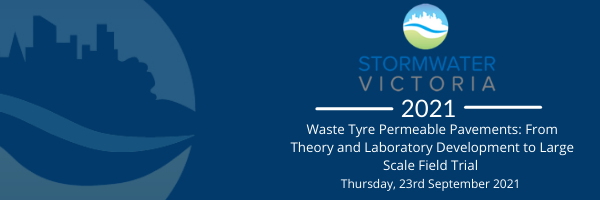
Urbanisation generates a change in land use, as natural landscapes are gradually replaced with impermeable built environment. In Victoria, pavements contribute approximately up to 70% of the impermeable surfaces in urban catchments. The impermeable surfaces impact the hydrological conditions of urban catchments, creating implications for stormwater management. This shift from “naturally-permeable” to “impervious” surfaces results in an increase in the surface run-off during rainfalls, resulting in an increase in flash flooding.
Permeable pavements are among potential solutions to reduce the amount of surface run-off and the risk of flash floods; however, the main barriers in their uptake is their perceived lack of capacity to perform under traffic loads, rate of infiltration, and perceived reduction in permeability over time caused by clogging. This presentation reports on development of a new “waste tyre permeable pavement” developed at The University of Melbourne. The hydro-mechanical performance of a large-scale trial site constructed using different design formulations in the City of Mitcham, South Australia is reported here reflecting on measurements obtained using different set of instrumentation. Some new examples of recent trials in Victoria will also be presented.
This presentation will go through design principles, construction process, mechanical and storm-water management monitoring regime, monitoring results and lessons learnt from this trial.
This webinar is sponsored by Porous Lane.